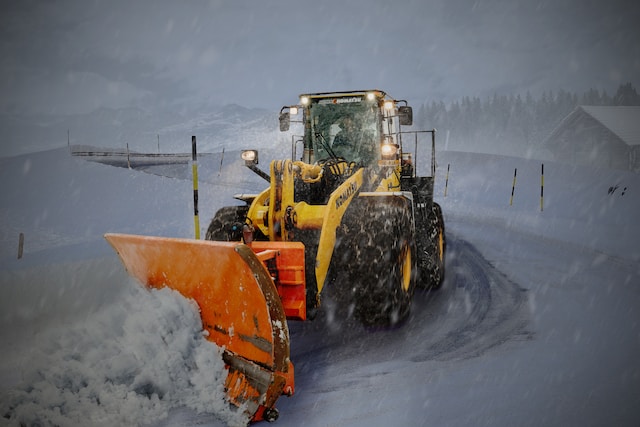Snowfall Dynamics: A Closer Look at The Weight of Snow

Snowfall is an essential occurrence with significant impacts on human society. Scientists study this occurrence for many reasons, including exploring the dynamics of snow formation and understanding what leads to high vs. low-density newly-fallen snow. Accumulated snow is a surface water reservoir providing seasonal runoff for millions of people and water-dependent ecosystems. This analysis will diagnose the structure of the atmosphere in advance of and during a significant winter storm using observations, reanalysis data, and numerical modeling.
Temperature
Temperature affects snow density in several ways. It impacts the amount of water in a snowflake, determining whether it is “heavy” or “light.” It also influences the ice crystal habit and size and the extent to which they rim and clump together to form an aggregate. In addition, temperature affects the rate at which snow falls. A warmer storm typically produces lighter and fluffier snow than a colder one. Snow-to-water ratios also vary according to the temperature of the cloud generating it. For example, a low ratio results when there are a lot of super-cooled water droplets in a cloud, and a high ratio when there are more ice crystals. The presence of blowing snow can further complicate the snow-to-water balance.
Wind
The weight of snow depends on the wind’s strength and direction. The wind also influences the location of lake-effect snow bands. The wind direction determines whether the snow band will converge on a large, open body of water. The speed of the wind also determines how far the snow bands spread inland. A strong wind can also help produce heavier snowfall by forcing air to rise over rugged terrain, resulting in orographic lift. Snow density is a crucial component in determining a storm’s power and its effects on nearby communities, along with temperature. Direct observations of snowfall accumulations are limited in length and scope, while the resolution of existing gridded data needs to be more coarse for topography-corrected analyses. As the solution of global climate models improves, including extreme wind and snowfall metrics may become feasible.
Time
Snow density is a function of the amount of water in the snow and how much it weighs per unit of volume. The amount of water in the snow is determined by measuring its depth, or Snow Water Equivalent (SWE). A foot of deep, dense snow will weigh more than a foot of light, fluffy snow. Once snow falls, its water content and weight increase with time. It can pick up humidity from the air, become compacted due to wind and drifting, and even re-freeze into ice (which increases its density). It is a common phenomenon known as snow metamorphism. The water in the snow crystals re-freezes from the sharper edges to more rounded shapes, resulting in a reduction in the liquid-to-solid ratio and more dense snow. The re-freezing effect is accelerated as temperatures approach freezing. It is one of the reasons that many forecasters avoid the 10-to-1 rule when estimating snowfall amounts, preferring to use SWE instead.
Depth
When snow is more profound, it’s heavier on average per unit of volume. The snowpack becomes compacted by the weight of the additional snow above it. Wind speed also influences snow density, with faster wind speeds tending to yield higher-density newly-fallen snow. The ratio of ice to liquid water in the snowpack, known as a snow-to-water ratio (SWR), can affect the weight of an event. Unfortunately, histograms of snow ratio from individual observing sites can vary greatly even for locations close to each other and the skewness toward high snow-ratio classes. Understanding these factors is essential for predicting the intensity and duration of snow events. This information can be obtained from local radars, the National Weather Service’s snow telemetry network, and by manually collecting snow depth and snow-to-water ratio (SWE) data at each location. This information can then be used to produce snowfall intensity and duration maps.



